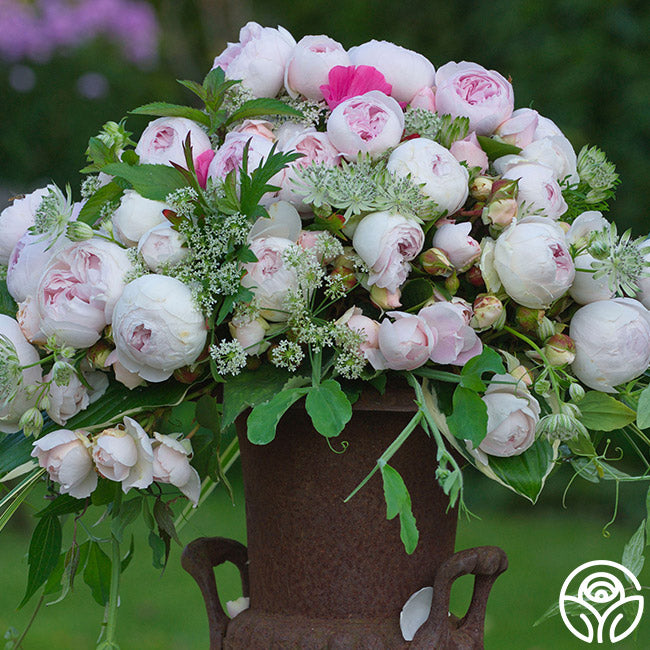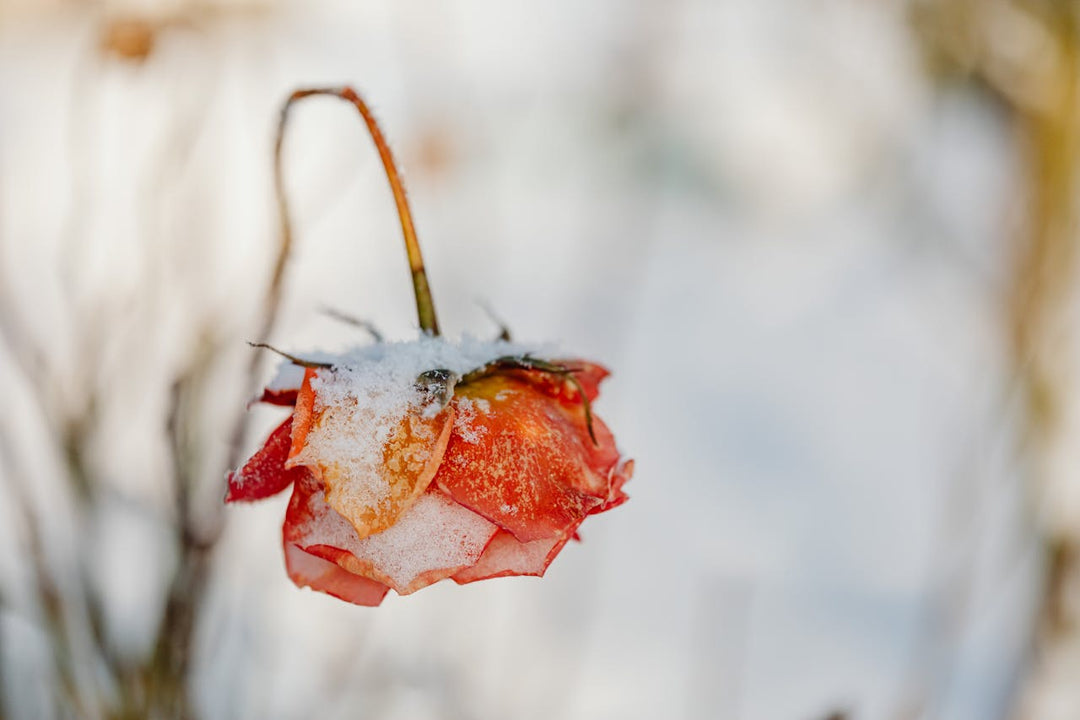How To Transplant or Move a Rose Bush
Every gardener has a time where they look at a plant and think “you belong somewhere else” or see an empty spot in the garden and think “this rose would look perfect over there!” Well, it’s a good thing that roses are adaptable to being moved to a new home!
When you decide on a place to move your rose, remember that roses like “brand new homes”. They don’t like to live somewhere that another plant has already been planted. But you can still be successful if you follow a few simple rules when moving your rose.
First, decide if you are going to transplant your rose while it is dormant (early spring), or if you need to move it during the non-dormant, growing season. The best time to transplant is always during the dormant season in early spring as it will cause less stress and shock to the plant.
If you are able to transplant while the rose is still dormant, be sure to do the following:
- Wait until the threat of frost has passed before moving your plant.
- Cut the rose canes back to 10-12 inches and remove any foliage so the plant can focus on root development in its new home. Need pruners? Click here for some recommendations.
-
Dig a new hole and make sure there is good drainage.
NOTE: Not sure if you have good drainage? Dig your hole and fill it with water. If it has drained out in one hour, you have a good spot to plant! If not, try a different location in the garden. - Remove the rose by digging far enough away from the root ball so you don’t damage the roots. Take as many of the roots with you as possible and gently transfer to the new hole. If it is too large to carry, place it on a tarp and drag it to its new home.
- Amend the soil. In a bucket or wheelbarrow, mix equal parts mulch, potting soil, and peat moss. Add half of this mixture to the hole around the roots.
- Water the soil well when the planting hole is half-filled and let the water settle. Adjust the rose as needed if the soil has caused it to sink a bit.
- Add the remaining soil mixture and water again. Water the new rose every day for a week or two depending on your weather.
- Do not fertilize or use any insecticides until you see new growth on the rose.
Benefits of Bone Meal When Transplanting
Bone Meal by Heirloom Roses is an excellent choice for a rose plant after transplanting because it provides essential nutrients that support root establishment and overall plant health. Here’s why:
- Strong Root Growth: Bone meal is rich in phosphorus, a key nutrient that encourages strong root development, which is crucial for a newly transplanted rose to establish itself in its new environment.
- Healthy Foliage & Growth: The nitrogen content helps promote healthy green growth, ensuring the plant has the energy to produce leaves and stems as it settles.
- Disease Resistance & Bloom Support: The calcium in bone meal strengthens plant cell walls, improving overall plant health and increasing resistance to diseases, while also supporting flower development.
If you need to transplant your rose during the growing season (non-dormant), you can still be successful but water is key! Be sure to do the following:
- Prep your rose. A liquid vitamin B1 transplanting fertilizer will help the rose adjust to the move.
- Water deeply before transplanting so the rose is fully hydrated. This will lessen the demands on the roots and minimize transplanting shock.
-
Reduce plant size. Prune out any dried or dead material from the plant and cut the taller canes down to a manageable height before digging up the rose. Some gardeners prefer to match the height of the rose canes to the size of the root ball, which is acceptable also.
NOTE: You can also choose not to cut the rose back, and it will show you how much it can support by wilting at the tips. This means to increase watering and any material that does not recover within a few days of liberal watering should be removed at that time. - Dig a new hole and make sure there is good drainage.
- Remove the rose by digging far enough away from the root ball so you don’t damage the roots. Take as many of the roots with you as possible and gently transfer to the new hole. If it is too large to carry, place it on a tarp and drag it to its new home.
- Amend the soil. In a bucket or wheelbarrow, mix equal parts mulch, potting soil, and peat moss. Add half of this mixture to the hole around the roots.
- Water the soil well when the planting hole is half-filled and let the water settle. Adjust the rose as needed if the soil has caused it to sink a bit.
- Add the remaining soil mixture and water again. Water the new rose every day for a week or two depending on your weather.
- Do not fertilize or use any insecticides until you see new growth on the rose.















